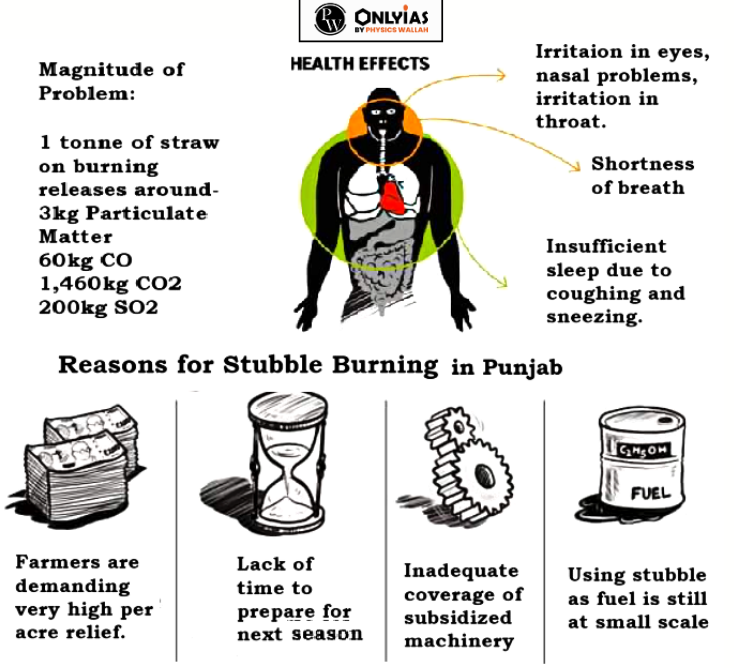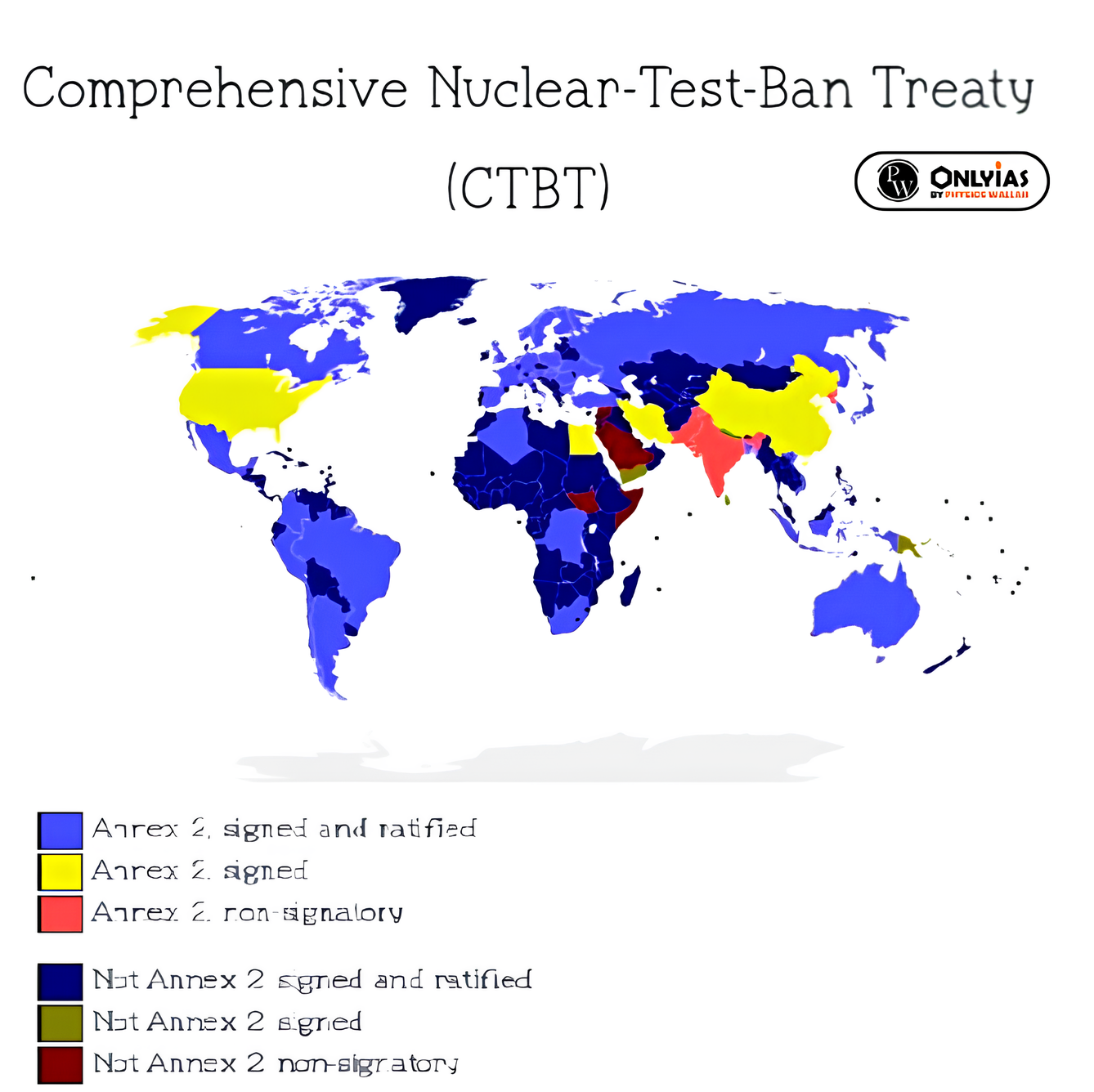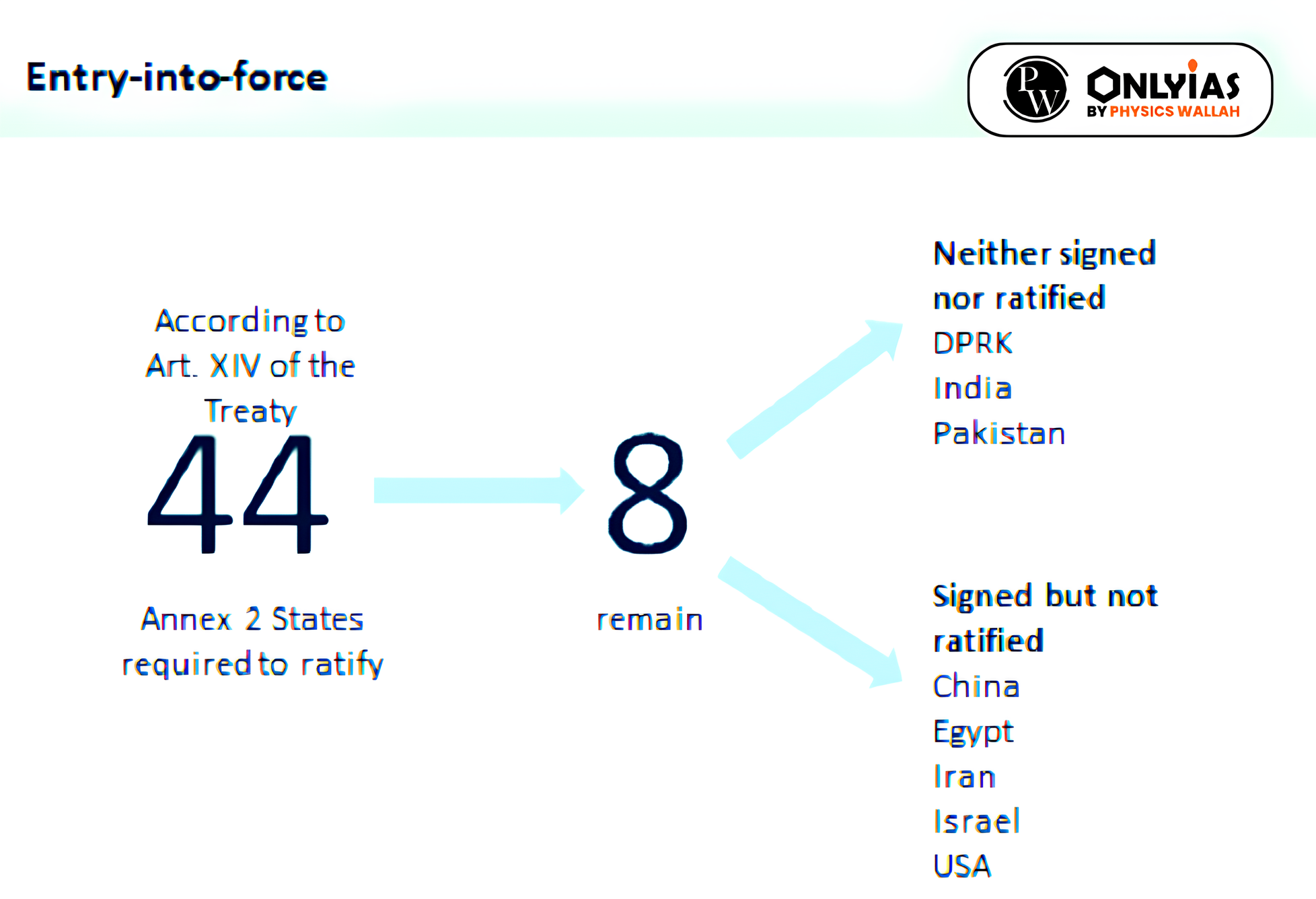News Source: PIB
About UN ESCAP
|
|---|
News Source: DTE
|
|---|
News Source: The Indian Express
| Relevancy for Prelims: Stubble burning, air pollution, 15-Point Winter Action Plan, Punjab Pollution Control Board (PPCB), Air (Prevention and Control of Pollution) Act, 1981, and Air Quality Index (AQI).
Relevancy for Mains: Stubble burning in Punjab, challenges associated with crop burning, and policy interventions by the central government to reduce stubble burning. |
|---|

Also read: POLLUTION AND ITS EFFECTS ON HEALTH

ALSO READ: CLIMATE CHANGE & MITIGATION STRATEGIES
National Air Quality Index (NAQI)
|
Best Practices:
|
|---|
To solve the problem of stubble burning in Punjab, everyone needs to work together. We should encourage farmers to use new and eco-friendly farming methods, teach and support them, and put effective rules in place to reduce the harm to the environment and people’s health.
| Attempt the PY Prelims Question
What is/are the advantage/ advantages of zero tillage in agriculture?
Select the correct answer using the code given below:
Ans: D |
|---|
| Attempt the Mains Question: Discuss the issues associated with stubble burning in India. Also, suggest innovative measures to recycle crop residue. (250 words, 15 Marks) |
|---|
| Relevancy for Prelims: CTBT; Comprehensive Nuclear Test Ban Treaty, Nuclear Supplier Group (NSG), NPT, UNGA, Treaty on Prohibition of Nuclear Weapons, P-5 Countries, and India’s Nuclear Policy-No first use.
Relevancy for Mains: India and the CTBT, India’s Nuclear Doctrine, ans Features of India’s Nuclear Policy. |
|---|
Treaty in Turmoil

Also read: UNGA’s 78th Session: Promoting Peace, Prosperity, and Sustainability
Commission for the Comprehensive Nuclear-Test-Ban Treaty Organization (CTBTO)
|
|---|

India’s Nuclear Doctrine
Salient Features of India’s Nuclear Policy:
|
|---|
What is the Non-Proliferation Treaty (NPT)?
|
|---|
Considering the present pessimistic environment, the Russian revocation of the Treaty may not seem shocking or startling. Still, it is unfortunate for arms control efforts.
In this regard, India supports the commencement of negotiations on a comprehensive Nuclear Weapons Convention in the Conference on Disarmament, which is the world’s single multilateral disarmament negotiating forum working on the basis of consensus.
Treaty on the Prohibition of Nuclear Weapons (TPNW): It was entered into force on 22 January 2021
|
|---|
| Attempt the PY Prelims Question
What is/are the consequence/consequences of a country becoming the member of the ‘Nuclear Suppliers Group’?
Which of the statements given above is/are correct?
Ans: A |
|---|
SC Verdict on Newsclick Shows Adherence to Due Pro...
Stay Invested: On Chabahar and India-Iran Relation...
Credit Rating Agencies, Impact on India’s De...
Catapulting Indian Biopharma Industry
Globalisation Under Threat, US Import Tariffs Have...
Global Report on Hypertension, Global Insights and...
<div class="new-fform">
</div>
